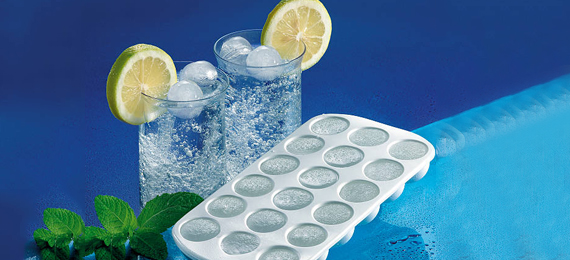
The flat spot on ice cube trays is actually to even out the water flow quickly without wasting it.
There is nothing as tasty as a chilled drink in summer. Ice cubes play a significant role in our day to day life and its requirement is huge. But have you ever wondered how ice cubes are made and why ice cube trays have flat spots on them?
- The ice cube trays were actually invented to even out the flow of water. This also help in refilling the ice tray quickly without much wastage of water.
- Silicon ice cube trays are eco-friendly. They are flexible so that the frozen ice cubes can be easily removed by simply twisting the trays.
- “Twist ice tray” is an ice cube tray that allows you to easily dispense the ice cubes from the tray with a simple twist. The dispensed ice cubes are collected in the removable tray below.
- Ice cubes are made by filling the tray with water and putting it inside the freezer. Many freezers now also have ice makers.
- Ice cubes from hot water form faster than cold water. This effect is called the Mpemba effect.
- Ice melts faster in water than air. As water has a higher heat capacity than air and molecules in water are more tightly packed than the air hence ice cubes get easily melted in water.
- Reusable ice cubes are generally filled with distilled water. The gel bead inside the ice pack is made with sodium polyacrylate, which causes irritation when swallowing.
- Dry ice cubes are not made with water. It is actually made with carbon dioxide. As carbon dioxide doesn’t have a liquid form, carbon dioxide gas will directly form into solid ice cubes.
Today, refrigerators come with a variety of ice cube machines and trays. There are internal automatic ice makers and dispensers built inside the doors of the refrigerator and the flat spots in between the ice cube moulds are not only used to make ice cubes but also for other food hacks.
Who Invented the First Ice Cube Tray?
- A. John Logie Baird
- B. Thomas Davenport
- C. Guy L. Tinkham
- D. Elisha Graves Otis